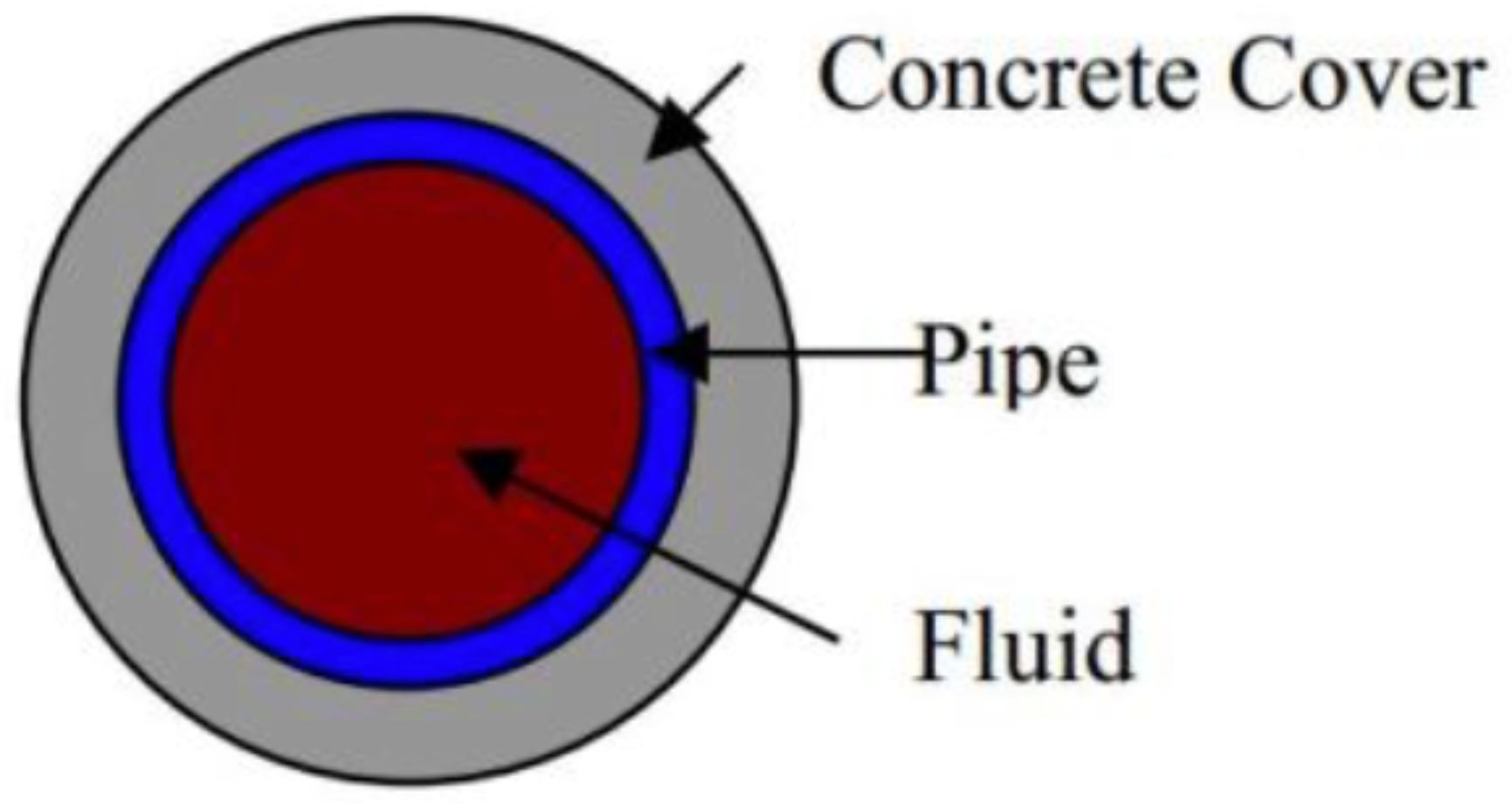Oil & Gas Pipeline Survey
Pipeline on Bottom Stability
One important aspect in designing an offshore pipeline system is its stability for being underwater, on the seabed for a life time service (operation). The analysis of keeping the pipeline system remained on the seabed is known as On-Bottom Stability. There are few methods to maintain pipeline at the seabed, such as pipe burial, trenching, as well as building a rock berm, and thicken the concrete coating. On-bottom stability consists of vertical stability and dynamic lateral stability.
Vertical Stability
Total pipe weight is the weight of the pipe alloy steel material, anti-corrosion coating, and field joint coating. A cross-section of an offshore pipeline can be seen through the image below:

In order to avoid floatation in water, the submerged weight of the pipeline shall meet the following criteria:

where:
Υw = safety factor
b = pipe buoyancy per unit length : ρw • g • ∏ • D2 / 4
ρw = mass density of water
g = acceleration of gravity
D = pipe outer diameter (including all coating)
ws = pipe submerged weight per unit length
sg = pipe specific density : (ws+b)/b
If a sufficiently low probability of negative buoyancy is not documented, the safety factor Υw = 1.1 can be applied.
Dynamic Lateral Stability
The objective of a dynamic lateral stability analysis is to calculate the lateral displacement of a pipeline subjected to hydrodynamic loads from a given combination of waves and current during a design sea state. On-bottom stability is a highly non-linear phenomenon with a large degree of stick/slip response. This is particularly important to keep in mind for large values of current to wave ratios and large wave periods, and more so for stiff clay and rock than for soft clay and sand where the build up of penetration and passive resistance is more pronounced.
Current Condition
The steady current flow at the pipe level may have components from:
Tidal current
Wind-induced current
Storm surge induced current
Density driven current
Short Term Wave Condition
The wave induced oscillatory flow condition at the pipe level may be calculated using numerical or analytical wave theories. The wave theory shall be capable of describing the conditions at the pipe location, including effects due to shallow water, if applicable. The short-term, stationary, irregular sea states may be described by a wave spectrum Shh(ω) i.e. the power spectral density function of the sea surface elevation. Wave spectra may be given in table form, as measured spectra, or in an analytical form.
For instance, the JONSWAP spectrum, the spectral density function reads:

Forces Affecting Pipeline On-Bottom Stability
Hydrodynamic force, consists of drag force and inertia force (can be calculated using morrison formula), as well as lift force. Lift force is a vertical hydrodynamic force. This would happen with the concentration of streamline on the pipe.
Soil friction force, is a horizontal force influenced by friction coefficient between pipe and seabed. Value of the friction coefficient depends on the seabed soil characteristics. For example, friction coefficient for clay-soil is 0.2 and friction coefficient for sandy-soil is 0.6.
Scan4Pipes Europe GmbH
Umgehungsstraße 78b - Hauptgebäude
D-99441 Mellingen
Germany
E-Mail: office@scan4pipes.com
Phone: +49 176 346 928 81
Website: scan4pipes.com
© Scan4Pipes Europe GmbH 2019 - 2023
Steuernummer: 162/118/05297
USt.-IdNr.: DE328138499
Registergericht: Jena
Handelsregister: HRB 516297